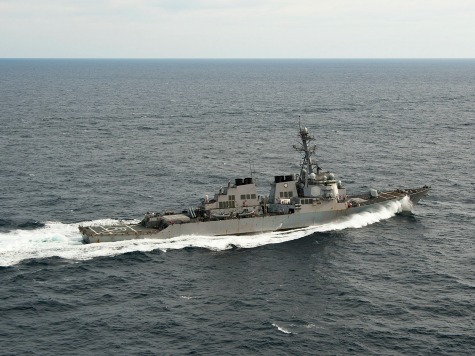The US Navy believes it has finally worked out the solution to a problem that has intrigued scientists for decades: how to take seawater and use it as fuel.
The development of a liquid hydrocarbon fuel is being hailed as “a game-changer” because it would signficantly shorten the supply chain, a weak link that makes any force easier to attack.
The US has a fleet of 15 military oil tankers, and only aircraft carriers and some submarines are equipped with nuclear propulsion.
All other vessels must frequently abandon their mission for a few hours to navigate in parallel with the tanker, a delicate operation, especially in bad weather.
The ultimate goal is to eventually get away from the dependence on oil altogether, which would also mean the navy is no longer hostage to potential shortages of oil or fluctuations in its cost.
Vice Admiral Philip Cullom declared: “It’s a huge milestone for us.”
US experts have found out how to extract carbon dioxide and hydrogen gas from seawater.
Then, using a catalytic converter, they transformed them into a fuel by a gas-to-liquids process. They hope the fuel will not only be able to power ships, but also planes.
That means instead of relying on tankers, ships will be able to produce fuel at sea.
– ‘Game-changing’ technology –
The predicted cost of jet fuel using the technology is in the range of three to six dollars per gallon, say experts at the US Naval Research Laboratory, who have already flown a model airplane with fuel produced from seawater.
Dr Heather Willauer, an research chemist who has spent nearly a decade on the project, can hardly hide her enthusiasm.
Now that they have demonstrated it can work, the next step is to produce it in industrial quantities. But before that, in partnership with several universities, the experts want to improve the amount of CO2 and hydrogen they can capture.
Collum is just as excited.
A crucial benefit, says Collum, is that the fuel can be used in the same engines already fitted in ships and aircraft.
Drawbacks? Only one, it seems: researchers warn it will be at least a decade before US ships are able to produce their own fuel on board.

COMMENTS
Please let us know if you're having issues with commenting.